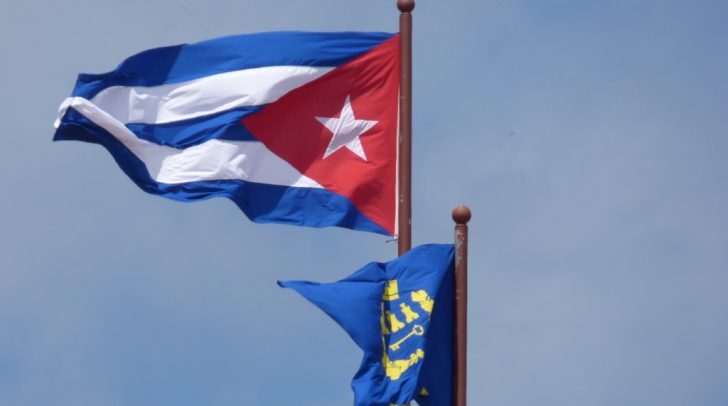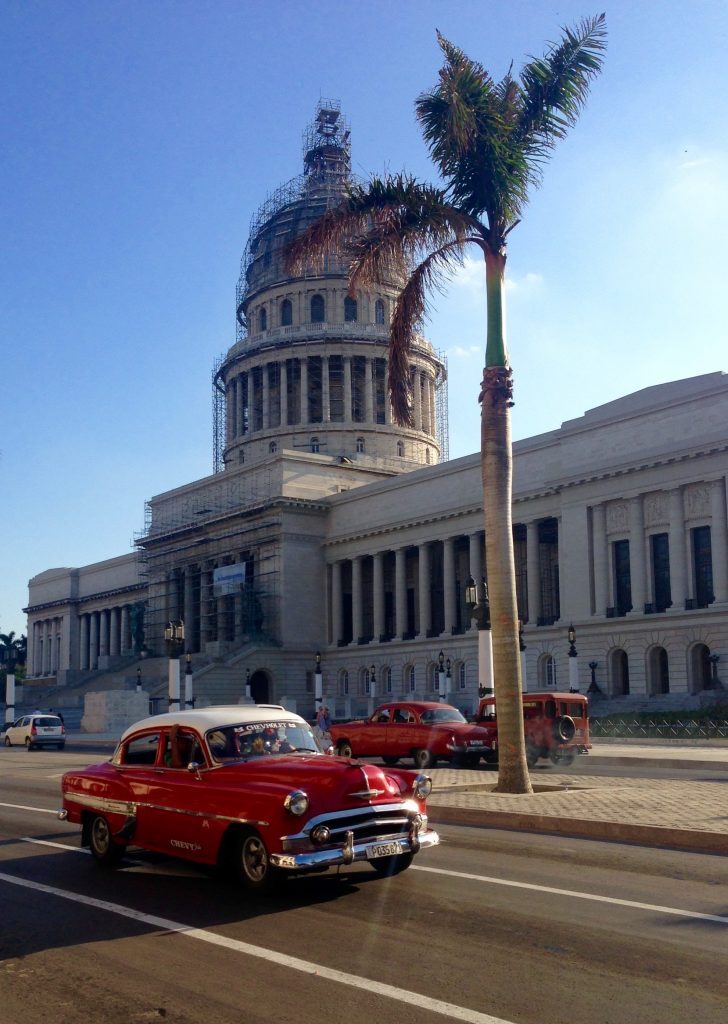By Thierry Pouille

For many years and until recently, Cuba was one of the forbidden countries that a U.S-based and registered pilot could not visit. I’ve been looking at organizing flying to Cuba since 2001—15 years ago. I’ve been jumping through all the hoops from the government to finally do the jump this past March.

Restrictions on visiting Cuba are quickly being relaxed, but the question for pilots is, can you fly your plane to Cuba? The answer is yes. How complicated is it? That depends, but most importantly keep in mind that in the eyes of the U.S. government, you cannot go to Cuba for tourism alone. You need to follow the rules established by OFAC (Office of Foreign Asset Control, a division of the Treasury Department) and the most commonly used reason for visiting Cuba is on a program called “people-to-people.” This means that, while in Cuba, you need to interact with the local people, not the government.
Cuba is much in the news lately, and a number of people are anxious to see with their own eyes what the country is all about. One thing it’s about is size—Cuba is the largest of the islands of the Caribbean, stretching more than 700 miles from the easternmost point to the westernmost point. The population stands at about 11 million, and since the revolution of 1959 it appears to be trapped in time since very few things have changed.
INTERESTING HISTORY
The history of Cuba is interesting. Until the late 15th century it was inhabited by a number of American Indian tribes, and the colonization by Spain started right after Christopher Columbus discovered the New World. Back in the late part of the 19th century the Spanish-American war basically led to the independence of Cuba. Officially it was a United States protectorate since Cuba was trying to strengthen its democratic system.
Over the next half-century a lot of dissent built up within Cuba, which led to the July 26 Movement and the overthrow of the Batista regime by Fidel Castro in 1959. Just three years later Cuba found itself at the center of a potential nuclear war over the Cuban Missile Crisis. It has taken more than 50 years to come back from that crisis to the point where U.S. citizens can travel to Cuba.
GETTING THERE

Before leaving the U.S. you need to clearly understand what is required to fly to Cuba, and comply with the people-to-people understanding. Be prepared to keep track of all your interaction while in Cuba.
You must depart the U.S. from one of 22 designated airports. In Florida these airports are Key West International, Miami International, Fort Lauderdale International, Palm Beach International, and Tampa International.
All other Florida airports that have customs service are not to be used to fly to or from Cuba. Cuba also requires that aircraft depart the U.S. from a designated airport. You cannot leave from just any U.S. airport like you can when flying to the Bahamas or elsewhere in the Caribbean.
It’s the same when returning to the U.S.—you must make your first landing and clear U.S. customs at one of the airports on the list of 22.
As with any international flight an eAPIS must be filed for both outbound and inbound flights, but you also need to set up an eAPIS account with the Cuba civil aviation authority and file an eAPIS inbound to Cuba, and outbound.
Before you fly you also need to negotiate with the aviation authority for a landing permit and parking at the destination airport. You can use the same contact as getting an overflight permit. There is nothing preventing you from flying to and visiting Cuba, and then pressing on to another destination if need be.
DEPART EYW

I have flown my airplane to Cuba twice recently. I have departed Fort Lauderdale International Airport and Key West International. Both are similar, but Key West has a lot less traffic than Fort Lauderdale International, and it’s only 80 nautical miles to Havana.
The flight to Cuba is pretty straightforward. You will be sent by Miami Center to one of the entry waypoints for Cuban airspace. If going to Havana it most likely will be TADPO, south of Marathon. The handoff from Miami Center to Havana Center will go extremely well. Cuban controllers speak pretty darn good English—with a Spanish accent, of course.
Cuba’s ATC system is very efficient. They have radar coverage and instructions are as clear as what you get in the U.S. One point to note is that, as in Europe, the transition level in Cuba is based on each airport. At Havana (code MUHA), the transition level is 3,000 feet. This will be confirmed to you by ATC. Transition level is usually mentioned on ATIS or given to you by ATC.
When you look carefully at the approach plate, you realize that the Decision Height and visibility are set up in kilometers and not feet. Also important to note is that the airport at Havana is at an elevation of 200 feet above sea level and that the runway, built for long-range Russian transport aircraft, is in excess of 13,000 feet long.
Required paperwork includes, of course, your pilot and medical certificates, an insurance certificate showing that Cuba is part of your insurance coverage area, registration documentation, and the airworthiness certificate. All of these documents must be sent prior to your arrival in order to secure permission to enter the country.
All of the handling is done by the Cuban government. So far we’ve experienced very efficient service. The average cost for each landing over the two to three nights we’ve stayed in Cuba each time is about $600, and is based on the weight of the airplane. One piece of good news is that jet fuel is extremely cheap at about 50 cents a liter, which puts it at less than $2 a gallon. Since U.S. credit cards are not yet accepted, the handling at the airport as well as the fuel can only be paid in cash. They take U.S. dollars, but if not you’ll have to exchange money in the terminal and get the local currency, which is the CUC.
WHERE TO STAY?

Being the forbidden land for so many years, Cuba is a place where a number of foreigners, mostly Americans now, are looking to go and visit. And why not? Cuba, and especially Havana, look like time stopped about 60 years ago. The sites are pretty amazing; you think you are in a movie set in the past.
The drive from Havana airport to downtown takes about 25 to 30 minutes—traffic is pretty light—and then you will need to find a hotel. That will be the first surprise.
High-end hotels and hotel chains, other than European brands, are not at all present in Havana. Names such as Melia and Iberostar from Spanish origin are present, but none can have their own holdings in the country. The Cuban government is involved with every hotel, and you can see that there is a need for cash since all of the properties are in dire need of upkeep.
The internet works and is fast and efficient, but it is controlled by the government. The food is adequate, but don’t expect to see any fancy things.
With so many small streets, Havana is a place to visit by foot. Over the last few years a tremendous amount has been invested to clean up and make the streets more enjoyable. Most of them in the old part of Havana are walking only. You will be able to see museums and art galleries, but there are very few shops compared to what we are used to in just about every other place in the world.
More restaurants and cafes are opening, but when compared to other Latin destinations such as Cartagena or Managua or El Salvador, you will see that very few private enterprises are in operation in Cuba.
You can easily spend three or four nights in Havana. Certainly you’ll want to enjoy a ride in one of the old cars. There are about 50,000 of them dating back to the 1950s. Very, very few are original since parts have been difficult to acquire. If you open the hood you won’t be surprised to see a Suzuki or Honda engine replacing the original one. It’s amazing what creativity and personal ideas can accomplish.

One nice thing about Havana is that there are no beggars in the streets, despite the fact that the average salary for a Cuban worker is about $25 a month. It’s pretty interesting what’s happening there.
Air Journey is planning several journeys to Cuba between now and the end of the year. If you have an interest, let us know since none of the dates will be published on the website.
Looking forward to seeing you soon!
Thierry Pouille is the founder of Air Journey (www.airjourney.com), which offers aircraft owners and pilots escorted and concierge tours for destinations around the world.
